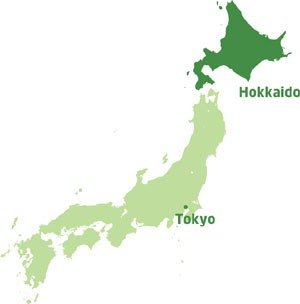A Spirit Abides in Everything
The Ainu people, descended from the first humans to set foot on Japan during the Ice Age, believe that every thing on Earth has a spirit. Animals, plants, rocks, mountains, rivers, everything.
I was able to visit their ancient homeland, the northern island of Hokkaido, a few weeks ago. Spring comes late to this beautiful place, and beyond the cherry blossoms snowcapped volcanos overlook stormy seas.
Volcanos and water: beauty of Hokkaido. I wish I had taken this great photo: you can see it and more about this northeastern section of the island at https://travel.gaijinpot.com/shiretoko-peninsula/
First Peoples of Japan
The Ainu are Japan's only recognized Indigenous group, and some think that they are directly descended from the Jomon Culture that extends back at least 13,000 years. Animals and birds, like the Blakiston's fishing owl shown in this amazing artwork by Ainu sculptor Yuji Yamada, are venerated.

These magnificent owls are among the largest in the world, and scoop up fish like the bald eagles we are familiar with in North America.
Ainu artwork echoes the spirit of each being, called a kamuy. The exquisite embroidery wrought by women on ceremonial robes captures the flow of wood grains, air, and water.
This and other artworks are on display at Nibutani, an Ainu community that features art and craft to revitalize the ancient skills, ethos, and values of these people.
Ainu clothing is designed to protect the wearer from the fierce winters and damp springs and autumns of this island. Some items are made of fur, similar to the Arctic. Other clothing is made of elm bark threads, fish skins, and feathers which are evolved for local conditions.
This delightful Ainu muppet is wearing slippery elm bark (attus) with decorative embroidery and salmon skin shoes.
Gratitude and a Sip of Wine
The Ainu told us that before taking any part of an animal or plant, they show respect and gratitude to its kamuy. To harvest elm bark, the tree is first offered a sip of rice wine on a special stick called an ikupasuy. After the bark is removed (sustainably, so the tree survives) the Ainu thank it.
These intricately carved ikupasuy are cared for at the National Museum of Ethnology in Osaka, where I have been working since November. Each year, members of the Ainu village visit these prayer sticks and conduct a ceremony, sponsored by the Museum. The village has given official approval for the sticks to be curated here.
The forest, in a bowl.
The traditional foods of spring were featured at local Ainu cafes. After touring workshops and museums with my friend Atsushi Nobayashi, I enjoyed a delicious bowl of Japanese-Ainu fusion cuisine: soba noodles in a miso based broth, with wild spring vegetables!
Wild mushrooms, baby bamboo shoots, and a variety of delicate forest ferns, wild garlic, and other greens graced this aromatic soup. The flavor? Like sunshine dappling through forest leaves. The smell of clean earth. Bright and dark, savory.
It's amazing how the Ainu worldview echoes that of some Native cultures of North America. I felt very honored to visit, and I hope you enjoyed this entry!
It feels fitting, as I near the end of my time here, to learn a little bit from Japan's original culture. Soon, like the salmon celebrated in this carving, I will return home.
But fear not--more entries about the foods and cultures of Asia are on their way! (Please come back soon!)




















